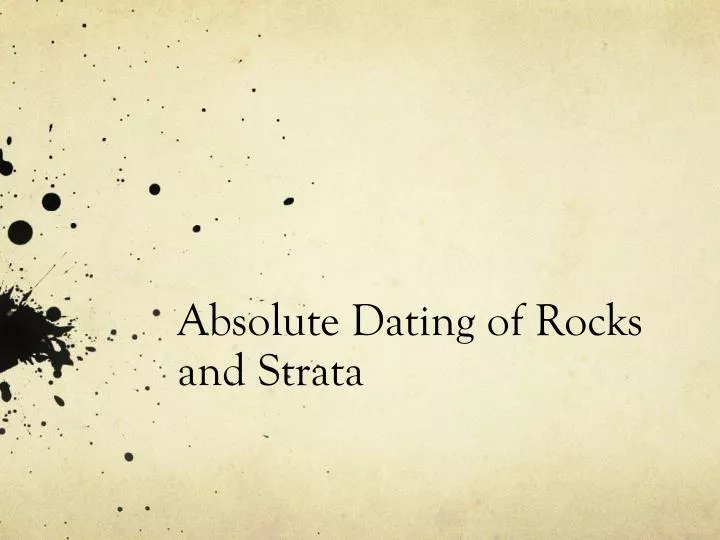14C atom will comply with the radioactive decay where a neutron is converted to a proton by the ejection of a negatively charged beta (β) particle referred to as a negatron. As a result the nucleus loses a neutron however gains a proton and can converted to a secure Nitrogen atom. Scientists should assume that C-14 production has been a continuing so as to calibrate their dating strategies. Yet it is recognized that the amount of C-14 within the atmosphere has changed over time, and the amount of C-14 within the atmosphere varies.
They use absolute relationship methods, sometimes referred to as numerical dating, to give rocks an actual date, or date range, in numbers of … Some isotopes are considered to be radioactive because they decay over time and emit ionizing radiation within the type of energy and particles. The rate of decay of a radioactive isotope is measured when it comes to its half-life, or the amount of time required for a cloth to decrease by one-half.
Absolute dating
Absolute courting methods provide more particular origin dates and time ranges, similar to an age range in years. Geologists can measure the paleomagnetism of rocks at a site to disclose its record of historic magnetic reversals. Every reversal seems the same within the rock record, so other strains of proof are needed to correlate the site to the GPTS. Information corresponding to index fossils or radiometric dates can be utilized to correlate a selected paleomagnetic reversal to a known reversal in the GPTS. Once one reversal has been associated to the GPTS, the numerical age of the entire sequence can be determined. Most absolute dates for rocks are obtained with radiometric methods.
In relative courting, largely the common sense ideas are applied, and it’s advised that which artifact or object is older than the opposite one. Most generally, the traditional factors of the rocks or objects are examined utilizing the method called stratigraphy. In different phrases, we are ready to say that the age in relative relationship is ascertained by witnessing the layers of deposition or the rocks.
Because of these and other components, Thermoluminescence is on the most about 15% correct. It takes 5,730 years for half the carbon-14 to decay to nitrogen; this is the half-life of carbon-14. After another 5,730 years, only one-quarter of the unique carbon-14 will remain. Being able to date things permits archaeologists to know how people’s lives modified over time and to inform histories that join the previous and current. In this fashion samples as previous as Silurian and even Precambrian age could be handled. An age limit of about 50,000 years applies to this technique due to the brief half-life of 14C.
Radiometric dating
All plants and animals take in radioactive and non-radioactive carbon when they eat and breathe. When they die, the carbon-14 of their wood and bone starts its radioactive decay process. This means the amount of carbon-14 goes down over time in a predictable means.
This process frees electrons within minerals that remain caught inside the merchandise. Because of advancements in geochronology for over 50 years, accurate formation ages are now known for many rock sequences on Earth and even in space. The oldest accurately dated rocks on Earth are metamorphosed felsic volcanic rocks from north-west Western Australia. These were dated at about four.5 billion years old using single zircon grains on the SHRIMP. This is a common dating methodology mainly used by archaeologists, as it could only date geologically current natural materials, usually charcoal, but also bone and antlers. For radiocarbon courting to be possible, the fabric should once have been part of a dwelling organism.
In relative courting techniques like stratigraphy and biostratigraphy are used to know which of the thing is older. On the other hand, in absolute relationship, methods like radiometric courting, carbon dating, and trapped electron methodology are used. Dating is a method utilized in archeology to establish the age of artifacts, fossils and different gadgets thought-about to be useful by archeologists. There are many strategies employed by these scientists, fascinated in the outdated, to get to know the age of things. It is possible to inform the variety of years in the past a specific rock or archeological website had been formed.
Dating rocks and fossils utilizing geologic methods
Detrital sedimentary rocks comprise clasts from separate mother or father rocks from unknown places and derived  ages are thus meaningless. However, sedimentary rocks with precipitated minerals, corresponding to evaporites, could contain components appropriate for radioisotopic relationship. Igneous pyroclastic layers and lava flows within a sedimentary sequence can be used to date the sequence. Cross-cutting igneous rocks and sills can be used to bracket the ages of affected, older sedimentary rocks. One difficulty in using this relationship method is that radioactive isotopes occur extra commonly in igneous and metamorphic rocks and most fossils happen in sedimentary exposures. One of those is glauconite, a silicate minerals that incorporates potassium.
ages are thus meaningless. However, sedimentary rocks with precipitated minerals, corresponding to evaporites, could contain components appropriate for radioisotopic relationship. Igneous pyroclastic layers and lava flows within a sedimentary sequence can be used to date the sequence. Cross-cutting igneous rocks and sills can be used to bracket the ages of affected, older sedimentary rocks. One difficulty in using this relationship method is that radioactive isotopes occur extra commonly in igneous and metamorphic rocks and most fossils happen in sedimentary exposures. One of those is glauconite, a silicate minerals that incorporates potassium.


